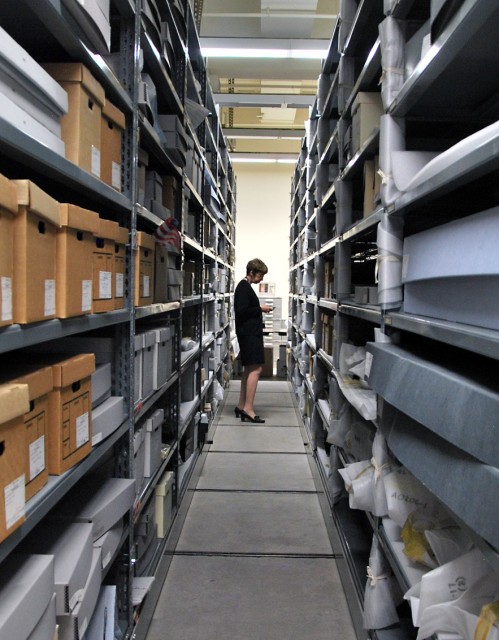
When he was governor, Arnold Schwarzenegger loved to talk about boxes. “Every governor proposes moving boxes around to reorganize government. I don’t want to move boxes around. I want to blow them up,” he said in his 2004 State of the State address.
But now, state archivists are moving around thousands of Schwarzenegger’s boxes -- 3,871 of them, to be exact. That’s how much space the Schwarzenegger administration’s records take up at the California State Archives in Sacramento. And he’s not alone. Beginning with Gov. Pete Wilson, the state became the chief custodian of gubernatorial records. California’s last three governors created so much paperwork that these boxes now fill up 10 percent of California’s entire archival warehouse.
The problem, from archivists’ point of view, is that they’re not allowed to cull a single piece of paper. The quarter-century-old law sending gubernatorial records to the state requires storage of every single item that outgoing governors turn over, no matter how odd or irrelevant it may be.
“With the Schwarzenegger records, in with constituent correspondence, I believe it was, we found a full bottle of motor oil,” said Nancy Lenoil, the state's chief archivist. “Someone was protesting, I think it had to do with offshore drilling, and they sent him a bottle of motor oil.”

